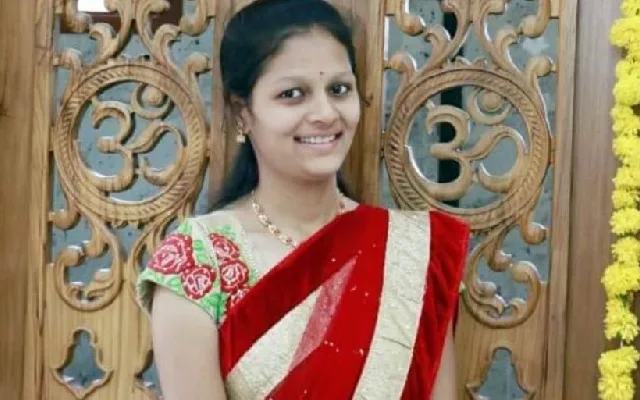
Bangalore: The second round of Global Adult Tobacco Survey (GATS 2) 2016-17 released on in Bangalore revealed that overall tobacco use prevalence has declined significantly among adults in Karnataka – from 28.2% in 2009-10 (GATS-1) to 22.8% (GATS-2) in 2016-17.
Smoking has decreased among adults from 11.9 % to 8.8 % during this time-period. Smokeless tobacco use has decreased by 3.1 % though (from 19.4 to 16.3 %). Betel quid with tobacco, bidi and gutka are the three most commonly used tobacco products. 9.4 % of adults use betel quid with tobacco and 5.9 % of adults each, smoke bidi and use gutka.
The Global Adult Tobacco Survey (GATS) is a global standard for systematically monitoring adult tobacco use (smoking and smokeless) and tracking key tobacco control indicators. GATS is a household survey of persons aged 15 and above conducted in all 30 states of India and two Union Territories.
The first round of GATS was conducted in 2009-10. The second round of GATS was conducted in 2016-17 under the stewardship of the Union Ministry of Health & Family Welfare with technical assistance from World Health Organization (WHO), Center for Disease Control and Prevention (CDC) and Tata Institute of Social Sciences, Mumbai. A multi-stage sample design was used. From each of the sampled households, one household member aged 15 and above was randomly selected for individual interview. In all of India, a total of 74,037 individuals were interviewed during August 2016 to February 2017.In Karnataka, a total of 1311 male and 1403 females were interviewed during September – October 2016.
The prevalence of tobacco use among persons aged 15-17 has decreased from 6.8% in GATS 1 to 3.7% in GATS 2, however the mean age at initiation of tobacco use has increased from 17.7 years in GATS 1 to 19.8 years in GATS 2. This means that children are starting to use tobacco at a later age than earlier.
Releasing the report, Shivashankara Reddy, Deputy Speaker, Karnataka Legislative Assembly said, “Findings from Global Adult Tobacco Survey (GATS 2) conducted is showing substantial decrease in tobacco consumption in the State of Karnataka from the last GATS survey. The Government of Karnataka, 5 years back, had released the GATS 1 Fact sheet during an assembly meeting, now we are glad that after understanding and owning the statistics of the consumption, Government of Karnataka had taken significant measures to curb the menace to protect the people of Karnataka and that has been proven successful in this survey. The efforts undertaken by the Government of Karnataka has borne fruits and consumptions of tobacco has hence reduced. I congratulate the all the Departments who have put in lot of efforts including the media to have raised awareness and achieve this.”
One encouraging result from GATS-2 is that there has been a significant decline in exposure to secondhand smoke (SHS) from tobacco use in the state. While exposure of adults to SHS at any public place has decreased from 37.2% to 23.9%, exposure from secondhand smoke at home fell (from 44.3% in 2009-10 to 23.2% in 2016-17) and exposure to secondhand smoke at workplace decreased from 42.0% of adults being exposed to SHS in 2009-10 to 24.8% in 2016-17.
“It is pleased to inform that Government of India’s efforts in tobacco control has made remarkable achievements. As such, the overall tobacco use prevalence declined among adults in Karnataka – from 28.2% in 2009-10 (GATS-1) to 22.8% (GATS-2) in 2016-17is a “very encouraging result”, said Arun Kumar Jha, Economic Advisor, Ministry of Health &Family Welfare, Government of India.
GATS-2 data further reveals a number of current tobacco users who want to quit (65.9 % smokers and 48.2% chewers) in Karnataka want to quit, which is slightly higher than those making quit attempts in 2009-10. 51.7% smokers and 63.9% chewers were advised to quit by health care providers. There is, therefore, an urgent need to further support and expand cessation services which will help current tobacco users to quit tobacco use.
Knowledge about harms from both smokeless and smoked tobacco use has increased in the state, both through effective pack warnings and information broadcast through various forms of media. Large pack warnings of 85% in particular have made a strong impression on current tobacco users and have motivated them to consider quitting, especially cigarette & bidi smokers.
Tobacco control strategies need to be mainstreamed with other national health programmes, within the overall framework of the National Rural Health Mission (NRHM). The multifaceted nature of tobacco problem in India calls for greater involvement and investment of various stakeholder ministries/departments, eg. Human Resource Development (Education), Finance, Agriculture, Labour, Commerce, Rural Development, Information & Broadcasting, Women & Child, etc. in addition to the Ministry of Health & Family Welfare, as also the Panchayati Raj Institutions, academic/public health institutions, civil society groups, media, etc.
NTCP currently covers over 400 districts in all states and UTs of India. The NTCP supports Training and Capacity Building of key enforcers of the tobacco control legislation (the Cigarette and Other Tobacco Products Act, 2003); build awareness through IEC and school-based activities; conducts monitoring of tobacco control laws and reporting; and conducts surveys (like GATS) and surveillance (through compliance studies) which will improve policymaking and direct enforcement.


















